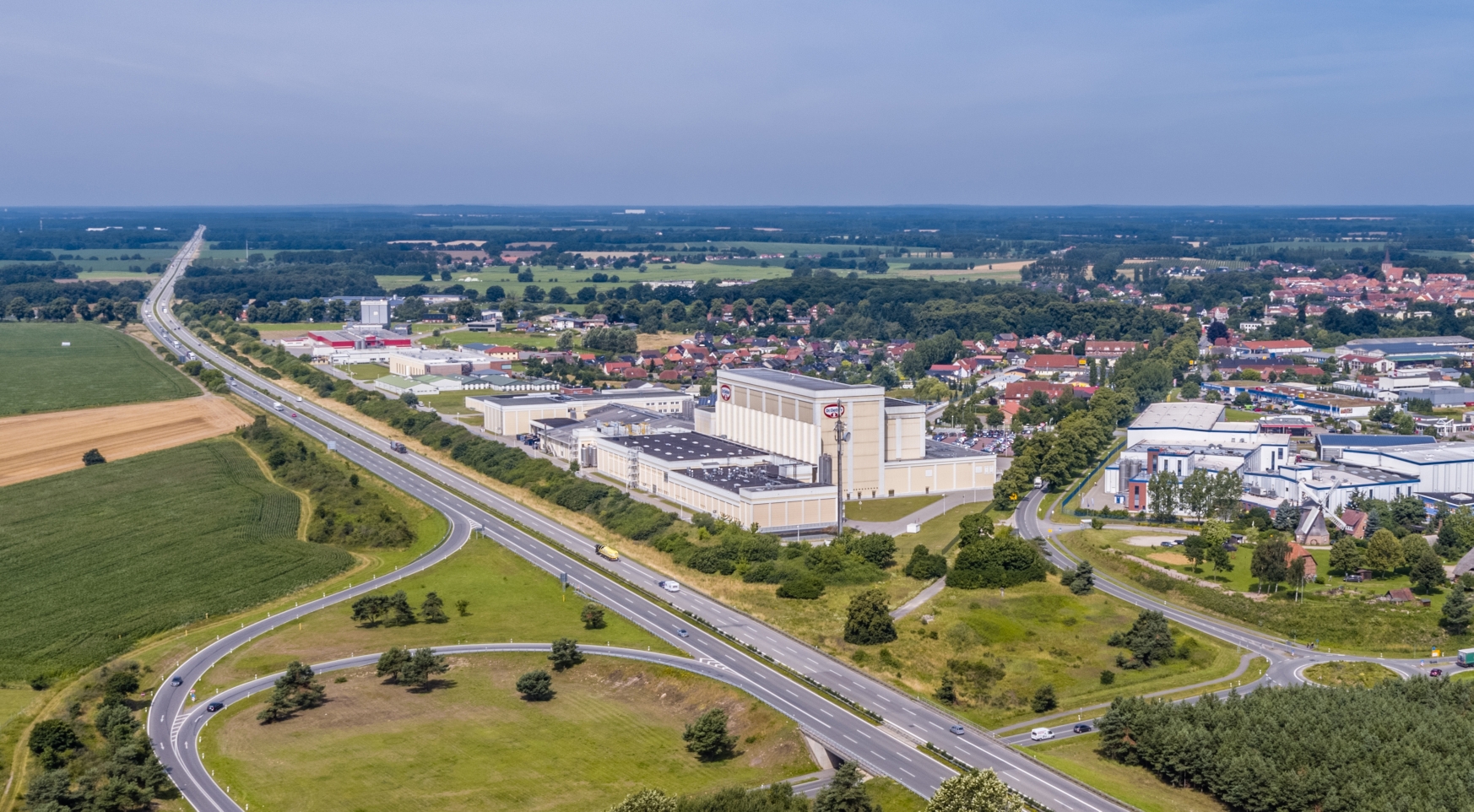Dr. Oetker Stories
Frozen pizza from East Germany - The Dr. Oetker factory in Wittenburg
(Almost) everyone likes pizza. It has been the favourite in our frozen range since 1970. In 1981, the first Dr. Oetker factory in Rhineland-Palatinate goes into operation, exclusively producing pizza. The reunification of Germany opens new opportunities and sales markets. In 1992, therefore, another frozen food plant goes into operation – in Wittenburg in Mecklenburg-Western Pomerania.

8.12.2022 • History
This year, the staff at our production plant in Wittenburg can celebrate a proud anniversary. Frozen pizzas have been produced here for 30 years now. Together with the Wittlich plant, Dr. Oetker produces over 2.3 million pizzas a day in Germany alone. An impressive figure! Let's take a look at how it all began here in Wittenburg.
Investments after German Reunification
The fall of the Berlin Wall makes the long unthinkable a reality: Germany is reunited. Not only for the people in East and West does this mean growing together, but also for companies new opportunities arise. Together with another manufacturer in the food industry, Dr. Oetker therefore founds a joint venture in 1991 to produce in the then so-called "new federal states". PIZZA-Frost GmbH is founded, with an initial investment volume of 60 million Deutsche Mark. A location is also quickly found. Wittenburg, just outside Hamburg, proves to be the ideal location. The town is excellently connected by the Autobahn 24, and the seaport of Hamburg and the reunited Berlin can be reached quickly. The broad support of the population and local politics does the rest. Construction work begins in November 1991, and in 1992 Dr. Oetker acquires all the shares in PIZZA-Frost GmbH, so that the Wittenburg plant is now run by Dr. Oetker alone. The last construction work is finally completed in 1994. At this time, 126 employees are working at the plant.
Pizza, Ready Meals and Cakes from East Germany
In October 1992, the first line goes into operation with the production of Ristorante Salame. The official opening follows in 1993 with an open day for the public.
In addition to pizza, other frozen products are soon produced. Dr. Oetker has been active in frozen food since 1960, so an enormously extensive range has developed over the decades. Frozen baked goods are also produced, which is why German cake classics, such as Berliners (a kind of doughnut), come off the production line in Wittenburg. In addition, ready-made meals complement the production range. In 1989 Dr. Oetker introduces the China-Town range. These are dishes modelled on Asian national cuisines. Customers can choose between rice and noodle dishes, spring rolls or sea specialities based on authentic models. 12 products from the China-Town line come off the production line in Wittenburg. In addition, four pasta dishes from the Ristorante range are also produced.
Up to 1200 kg of pasta can be cooked and 2300 kg of vegetables mixed every hour. The manufacturers of the machines used are as international as the dishes. The factory uses equipment from Belgium, Germany, France, Sweden and Japan. In 1994, 104,000 ready meals are produced per day in two shifts.
Pizza Calzone from Wittenburg
In the pizza sector, Dr. Oetker introduces the first industrially produced pizza calzone in 1994. After the sister plant in Wittlich, this Italian speciality is also produced in Wittenburg from the mid-1990s. The ultra-modern facilities can be adapted accordingly.
At the beginning of the 2000s, the decision is made to concentrate completely on pizza production. New pizza lines are built and Wittenburg becomes the development centre for production and processes around dough-based Dr. Oetker products. Today the plant is the largest employer in the region. The workforce has now grown to over 1,000 employees. 180 pizza and snack variations are produced today using the most modern methods, also for the international market. The Wittenburg plant is thus well prepared for the challenges of the future, so that many more anniversaries can certainly be celebrated!
For more information please contact:
Claus-Carsten Andresen
Media Spokesperson History & Archive